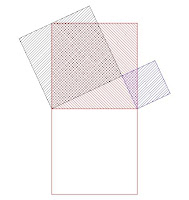 |
| From The city and country builder's and workman's treasury of design,
Langley, Batty (1696-1751). NYPL |
Many
teachers are in the practice of holding individual conferences with
students during literacy blocks. Teachers sit with students to converse
about the book they are reading, asking questions like “Is this a
just-right book for you?”, “Have you made any connections to the book?”,
“What questions came up while you were reading?”, etc. Leah Mermelstein, a literacy consultant, suggests regular, one-on-one writing conferences with students.
What
about math conferences? Over the last year, I have used an assessment
tool called the Primary Number and Operations Assessment to help me
interview students about mathematics concepts. I enjoy the opportunity
to sit with a single student and spend time listening as they perform
various math tasks and explain their thinking. I always learn important
things about the student’s strengths and I gain insight about
appropriate next steps for instruction.
Here
is an email from my colleague, Sally Hayes, fourth grade teacher
extraordinaire, in which she shares her experience conferring with
students during math class:
Karyn,
I
have to tell you about something I tried recently. It came to me
several years ago when I was correcting one of our Bridges unit math
assessments. I asked myself, "What is the most important outcome of this
assessment?" The answer, of course, is student learning.
As a teacher, I must figure out where each child is on the continuum
of learning for a domain so I can help them move forward. Grading the
assessments and entering scores into the database is only part of the
work. For years I had gone over assessments with the entire class, but
it never seemed very efficient or terribly useful for individuals. I
realized I should try going over the assessment with each student
individually. This would allow both me and the student to gain a clearer
understanding of their strengths and areas for improvement as a
mathematician.
So,
last Friday, the day after correcting our Unit 2 math assessments, I
decided to try conferring with each student. After lunch, I gave the
class some options for independent work during the next hour, which
included practicing math skills, writing in writer's notebooks, and
reading. While the class was quietly working, I met with each student to
discuss their math assessment. First we looked at strengths and then
areas that needed work. Amazing! The conferences were so much better for
the student and incredible for me; I finally felt like I was getting
something really useful out of a unit assessment. I only wish I had
allotted an hour and a half, which is a lot of time, but would be well
worth it. I need to refine the way I spend time with the students, but I
think it will get better and easier each time that I do it. I was
thinking that it would be nice to create small groups of 2 or 3 students
that had similar challenges with certain problems. I am glad I finally
tried math assessment conferences!
Sally








